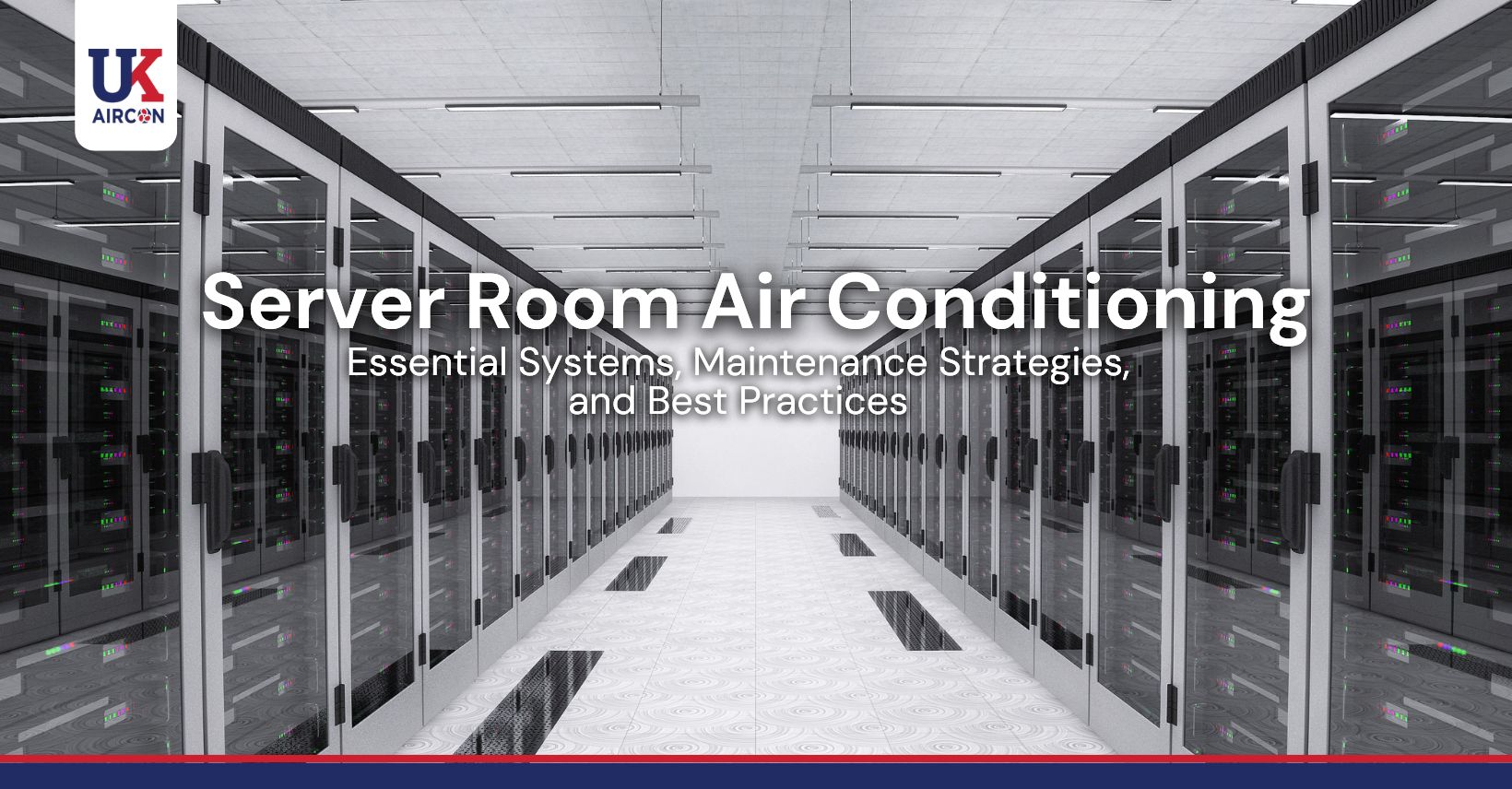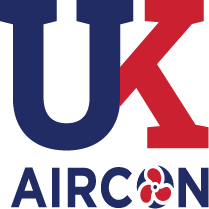Does your business rely on a server room to store and manage critical equipment?
Ensuring proper air conditioning is essential to maintain the reliability and efficiency of your server room environment.
This comprehensive guide will explore the importance of server room air conditioning, the risks of improper cooling, factors to consider when choosing a system, suitable air conditioning options, maintenance strategies, and best practices to keep your server room running smoothly.
Learn how to protect your valuable equipment and ensure optimal performance.
What Is Server Room Air Conditioning?

Server room air conditioning involves using specialised cooling systems to maintain the ideal environmental conditions for IT equipment housed within a server room.
Server room cooling systems maintain precise temperature and humidity levels to prevent overheating and optimize the performance of critical network devices such as servers, switches, and routers. A fundamental element in these systems is the Computer Room Air Conditioning (CRAC) unit, which cools warm air from the server environment and redistributes it. This mechanism highlights why maintaining proper air conditioning is important for server rooms, ensuring that vital equipment operates within safe thermal thresholds to avoid system failures.
Why Is Proper Air Conditioning Important for Server Rooms?
Proper air conditioning in server rooms is vital for maintaining optimal temperature and ensuring the smooth functioning of essential IT equipment. By preventing overheating, it safeguards against performance issues and equipment failure. Understanding these benefits highlights the potential risks associated with inadequate cooling, which we will explore next in the section on the risks of improper air conditioning in server rooms.
What Are the Risks of Improper Air Conditioning in Server Rooms?
Improper air conditioning in server rooms can lead to several risks, including equipment overheating, reduced performance, and potential system failures.
One of the primary risks of inadequate air conditioning in server rooms is the potential for overheating. If servers and networking equipment become too hot, it can lead to hardware failures and data loss. Without proper cooling systems in place, the overall performance of the equipment may be compromised, resulting in slower processing speeds and decreased efficiency.
High temperatures in server rooms can warp, crack, or cause components to malfunction, leading to expensive repairs or replacements. Such heat-related issues compromise system reliability, heightening the risk of downtime and interruptions to essential services. This underscores the importance of effective air conditioning, which we will further explore in the section discussing the critical factors to consider when choosing server room air conditioning.
What Factors Should Be Considered When Choosing Server Room Air Conditioning?
When choosing server room air conditioning, these factors must be considered to ensure the system meets the cooling needs efficiently and reliably.
Size of the Server Room

The size of the server room is an important factor in determining the appropriate air conditioning system, as it directly impacts the cooling requirements and efficiency.
Larger server rooms with a higher volume of space and more equipment racks will typically require more powerful and efficient cooling systems to maintain optimal operating conditions. Proper ventilation and airflow distribution become essential in larger server rooms to ensure that all areas are cooled adequately and evenly. The layout of equipment within the room plays a important role in selecting the air conditioning system to ensure that hot spots are minimised and cooling is optimised.
Heat Load from Equipment
The heat load generated by the equipment within the server room is another critical factor that affects the choice of air conditioning systems.
Server rooms are typically filled with various devices like servers, storage units, and networking equipment, each producing its share of heat. When all these devices operate together, the cumulative heat output can significantly raise the temperature within the room. This increase in temperature can lead to overheating, affecting the performance and lifespan of the equipment. Therefore, it is essential to accurately assess the total heat output to determine the cooling requirements for maintaining optimal conditions. A miscalculation in this aspect can result in inadequate cooling capacity, risking equipment failure and downtime.
Redundancy and Backup Systems
Incorporating redundancy and backup systems in server room air conditioning is essential to ensure continuous cooling and reliability, even during a primary system failure.
Multiple cooling systems are a safety net, safeguarding against unforeseen technical glitches or maintenance issues. By implementing redundant cooling mechanisms, such as alternative cooling paths or additional cooling units, the risk of downtime due to overheating can be significantly mitigated.
Back-up plans like automatic failover systems or standby generators fortify the server room’s resilience. This redundancy enhances the overall reliability and security of the cooling infrastructure and provides peace of mind, knowing that the critical equipment is protected around the clock.
Energy Efficiency
Energy efficiency is a key consideration when choosing server room air conditioning systems, as it impacts operational costs and environmental sustainability.
By investing in energy-efficient cooling systems, businesses reduce their electricity costs and lower their environmental impact by cutting carbon emissions. These systems maximize cooling efficiency with less energy, supporting sustainable practices in server room management. This emphasis on reduced energy consumption and enhanced sustainability is important in meeting corporate social responsibility and environmental regulations. Understanding which systems provide these benefits leads us to explore the types of air conditioning systems suitable for server rooms.
What Types of Air Conditioning Systems Are Suitable for Server Rooms?

Several types of air conditioning systems below are designed to meet server rooms’ unique cooling requirements, ensuring effective temperature regulation and optimal environment maintenance.
Precision Air Conditioning
Precision air conditioning systems are designed for server rooms, providing accurate temperature and humidity control to maintain optimal conditions for IT equipment.
These systems are provided with advanced sensors and controls that constantly monitor and adjust the climate within the server room. By ensuring a stable environment, precision air conditioning systems help prevent equipment downtime and reduce the risk of hardware failures due to overheating or moisture exposure.
These specialised units offer energy-efficient cooling solutions, contributing to long-term cost savings. Their quiet operation and customisable settings seamlessly integrate into any server room layout, making them an essential component for businesses relying on uninterrupted IT services.
In-Row Cooling
In-row cooling systems are installed between server racks, offering targeted cooling and enhanced airflow management within the server room.
In-row cooling systems cool the servers directly in the row where they are located, helping maintain optimal operating temperatures without overcooling the entire server room. This targeted approach results in higher energy efficiency and cost savings, as the cooling system only needs to cool the required areas.
The localised cooling provided by in-row systems also minimises the risk of hot spots and uneven cooling distribution, ensuring consistent and reliable performance of the servers. These systems can easily adapt to changes in server rack configurations, making them versatile and scalable solutions for evolving server room setups.
Chilled Water Systems
Chilled water systems use chilled water to absorb heat from the server room, providing an effective solution for large-scale cooling needs.
These systems typically consist of a chiller unit that cools the water, which is then circulated through a network of pipes to absorb heat from the surroundings.
The chilled water absorbs the heat and returns to the chiller unit to be cooled again, creating a continuous cycle of heat exchange that keeps the server room at an optimal temperature.
One of the main advantages of chilled water systems is their scalability, which allows them to adapt to varying server room cooling requirements without compromising efficiency.
Direct Expansion (DX) Systems
Direct Expansion (DX) systems are popular for server room cooling. They use refrigerant to remove heat directly from the environment.
This method circulates the refrigerant through coils that absorb heat from the server room air and then release it outside the building. The simplicity of this process makes DX systems highly efficient in smaller server room environments, where precision cooling is essential.
Direct Expansion (DX) systems offer straightforward installation benefits, appealing to businesses seeking quick, minimal-disruption cooling solutions. Renowned for their cost-efficiency and minimal upkeep, DX systems suit various server room environments well. Their practicality seamlessly leads into discussing the best practices for maintaining server room air conditioning, ensuring these systems operate optimally for extended periods.
What Are the Best Practices for Maintaining Server Room Air Conditioning?
Maintaining server room air conditioning involves several best practices to ensure continuous and efficient cooling, including:
- Regular maintenance
- Effective monitoring
- Proper airflow management
- Redundancy planning
Regular Maintenance and Inspections
Regular maintenance and inspections ensure that server room air conditioning systems operate efficiently and reliably.
Proper routine maintenance enhances energy efficiency and prolongs the lifespan of the air conditioning units, eventually saving businesses from costly repairs and replacements. During inspections, technicians typically check for refrigerant leaks, clean or replace air filters, calibrate thermostats, and lubricate moving parts to guarantee smooth operation. Adhering to a consistent maintenance schedule can identify and resolve potential issues proactively, preventing unexpected breakdowns and downtime, which can disrupt daily operations.
Monitoring and Temperature Control
Monitoring and temperature control are critical aspects of managing server room air conditioning. They help detect and address potential issues promptly.
By utilising monitoring systems such as Avtech and ServersCheck, IT professionals can actively monitor various environmental factors in the server room, including temperature, humidity, and power usage. These tools enable real-time monitoring and alerting, allowing swift responses to any deviations that could lead to system failures or downtime.
Proper Airflow and Ventilation
Proper airflow and ventilation are essential for effective server room cooling. They ensure that heat is appropriately dissipated and the environment remains stable.
Managing airflow and ventilation in a server room is important to maintaining optimal operating conditions for the equipment housed.
- By implementing strategic airflow patterns and ventilation systems, one can prevent the formation of hotspots that can lead to hardware failures and disruptions in the IT infrastructure.
- Hotspots occur when there is inadequate airflow, causing certain areas to accumulate excess heat, potentially damaging sensitive components.
Redundancy and Backup Plans
Implementing redundancy and backup plans in server room air conditioning systems is important for maintaining reliability and preventing downtime due to cooling failures.
Redundant systems, including backup air conditioning units and supplementary cooling mechanisms, are important for maintaining optimal server room temperatures. Implementing multiple systems mitigates the risk of downtime due to a single system failure, thereby enhancing reliability. This approach to redundancy is pivotal in maintaining continuous operations and service availability, setting the stage for our next discussion on ensuring reliable and efficient server room environments.
Final Overview: Ensuring Reliable and Efficient Server Room Environments
Ensuring a reliable and efficient server room environment involves implementing effective cooling solutions, adhering to best practices, and utilising professional services for maintenance and monitoring.
One key aspect of maintaining a well-functioning server room is consistent airflow and temperature regulation. Proper ventilation and cooling systems prevent overheating, leading to equipment failure and downtime.
Regular maintenance tasks, such as cleaning air filters, checking for leaks, and ensuring adequate airflow, play a vital role in the longevity of server room equipment and overall efficiency.
Professional services offer expert insights and proactive measures to optimise server room conditions. They can conduct thorough inspections, identify potential issues early on, and implement proactive solutions to prevent costly breakdowns. Visit here for more information.

